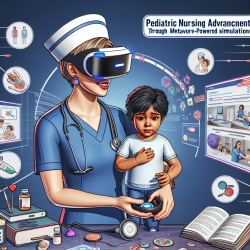Understanding Critical Periods in Neurodevelopment: Implications for Practitioners
In the realm of child development, understanding the critical periods of vulnerability in the developing nervous system is essential for practitioners, particularly those involved in speech and language therapy. The research article, "Critical periods of vulnerability for the developing nervous system: evidence from humans and animal models," provides a comprehensive overview of these critical periods and offers insights that can significantly enhance therapeutic outcomes.
Key Findings from the Research
The study highlights several key developmental processes, such as proliferation, migration, differentiation, synaptogenesis, myelination, and apoptosis, which are sensitive to environmental insults during specific periods. These processes are crucial for the proper development of the nervous system, and any interference can lead to developmental neurotoxicity.
Notably, the research underscores that neural development extends from the embryonic period through adolescence, with different behavioral domains (e.g., sensory, motor, and cognitive functions) being supported by various brain areas. This finding is pivotal for practitioners as it emphasizes the importance of timing in therapeutic interventions.
Implications for Practitioners
For practitioners, especially those providing online therapy services like TinyEYE, understanding these critical periods can guide the timing and nature of interventions. Here are some actionable insights:
- Early Identification and Intervention: Recognizing the signs of developmental delays early can allow for timely interventions, which are crucial during sensitive periods of brain development.
- Customized Therapy Plans: Tailor therapy plans to align with the child's developmental stage, focusing on enhancing the specific neural processes occurring during that period.
- Environmental Considerations: Be mindful of environmental factors that could impact neural development, such as exposure to neurotoxicants, and work with families to mitigate these risks.
- Continuous Monitoring: Regular assessments can help track progress and adjust therapy plans as needed to ensure they remain effective throughout the child's development.
Encouraging Further Research
While the research provides valuable insights, it also opens avenues for further exploration. Practitioners are encouraged to delve deeper into the nuances of neurodevelopment and explore how emerging therapies and technologies can be integrated into their practice to enhance outcomes for children.
To read the original research paper, please follow this link: Critical periods of vulnerability for the developing nervous system: evidence from humans and animal models.










